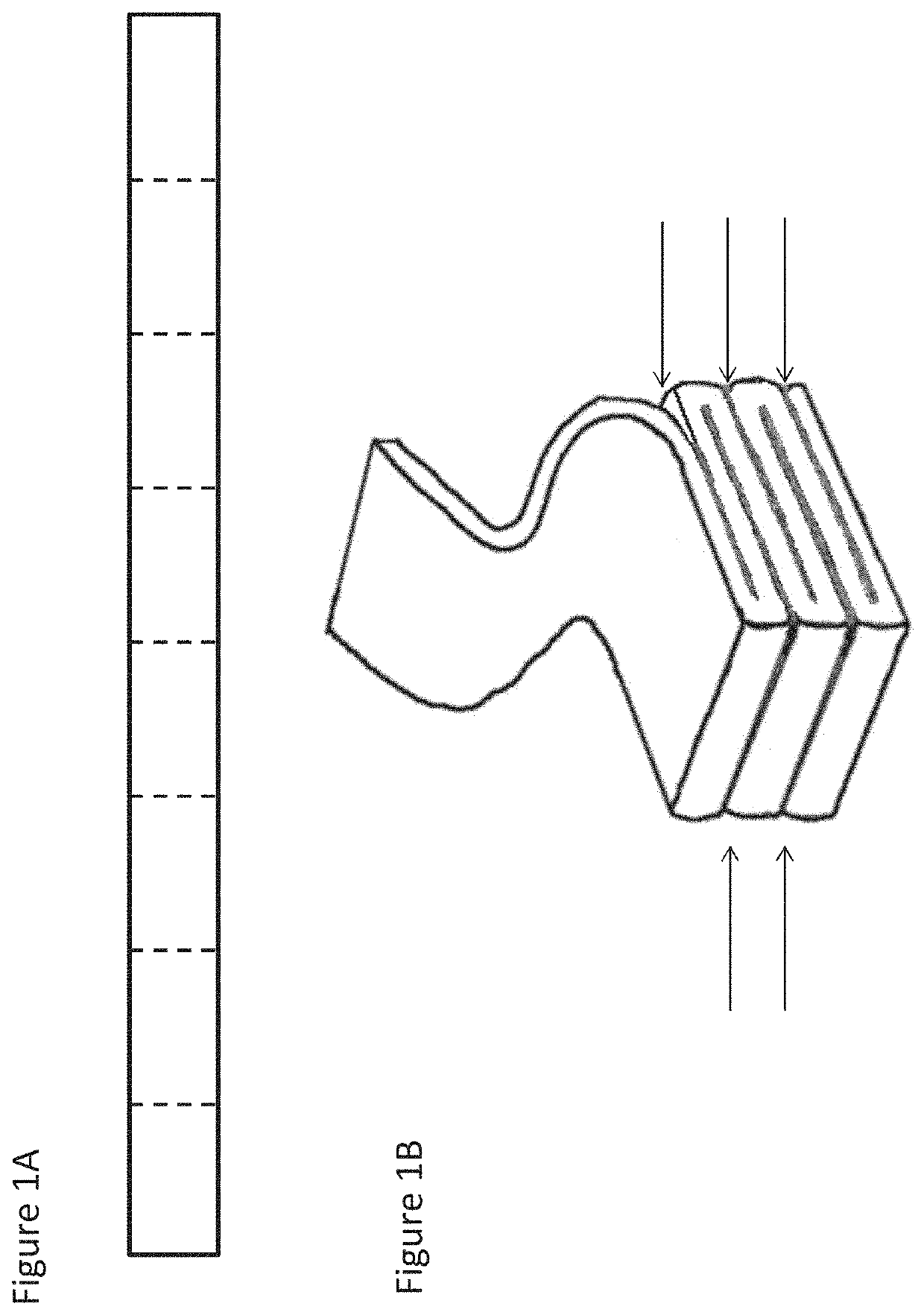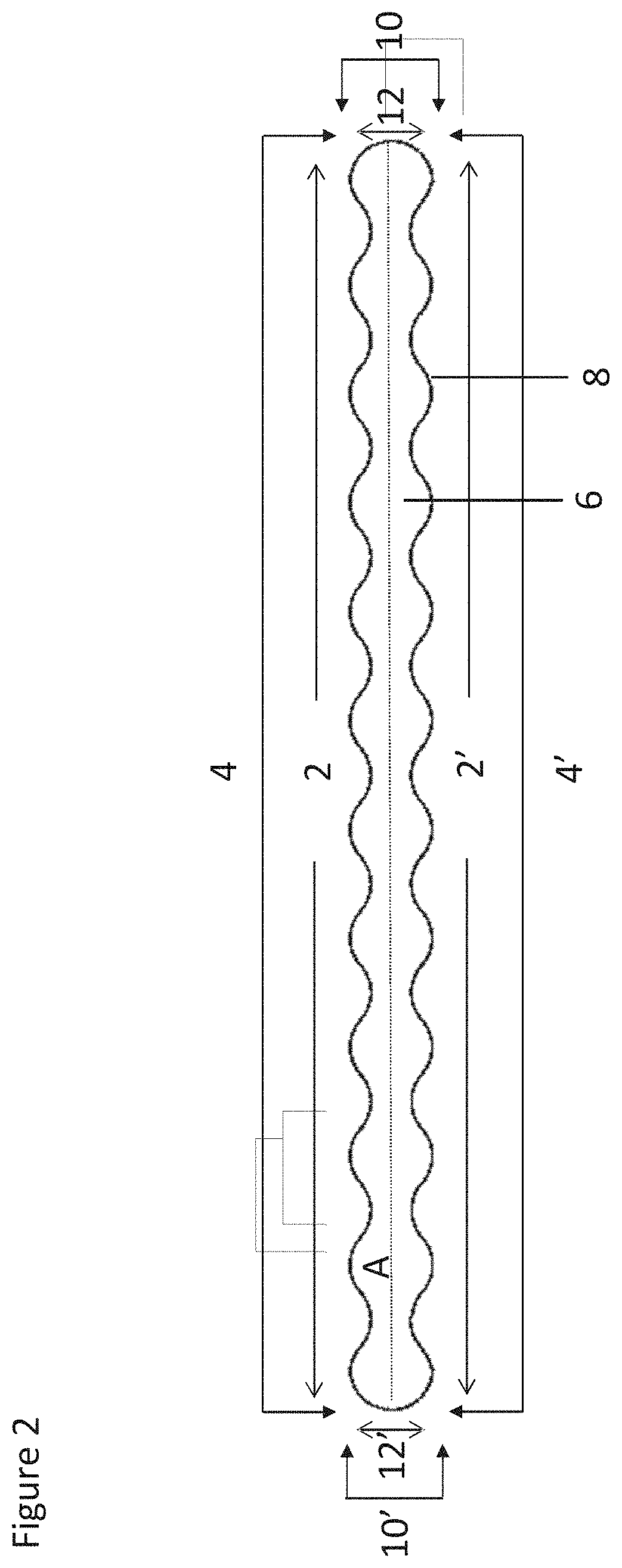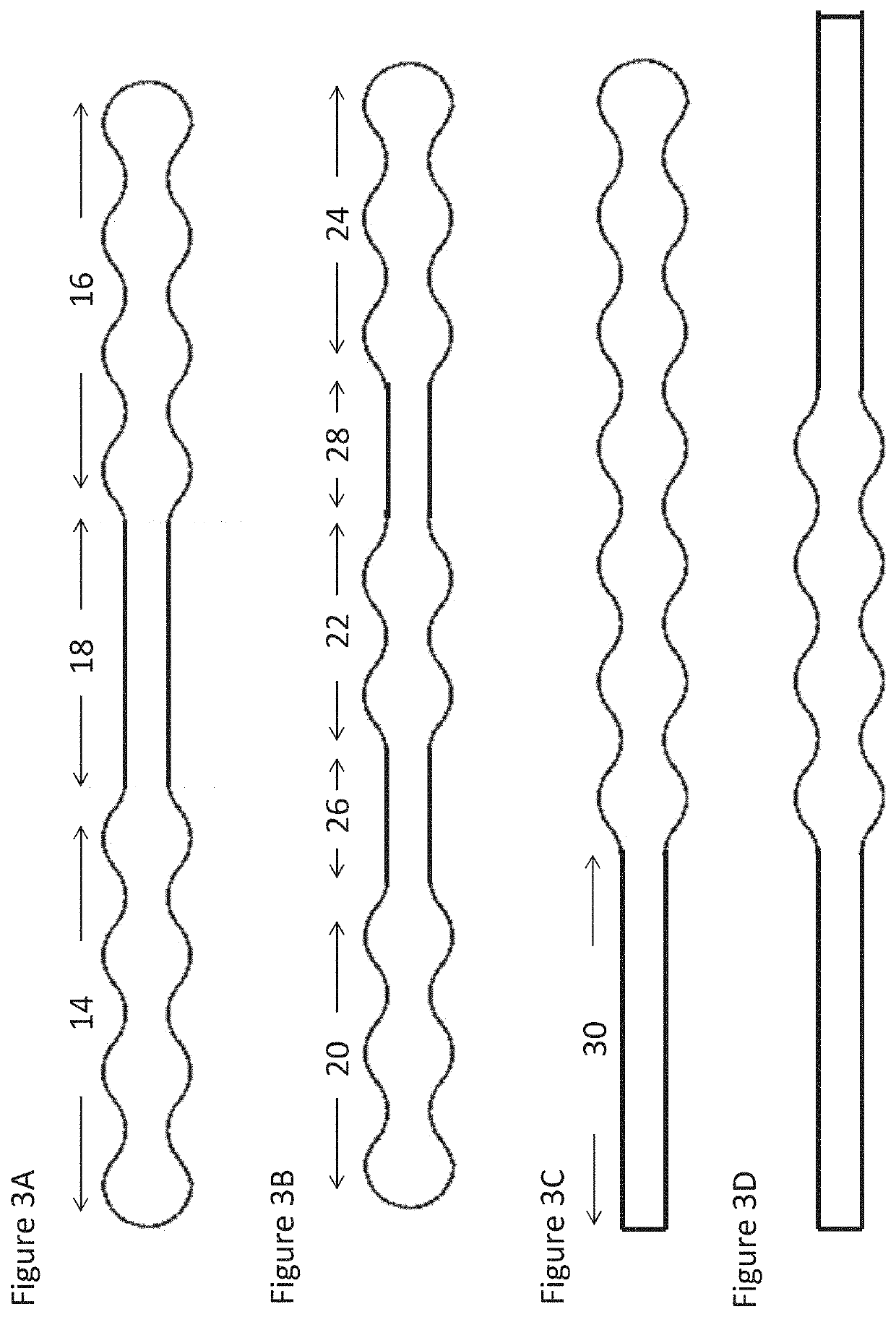Ribbon wound dressing
a wound dressing and bone wound technology, applied in the field of bone wound dressings, can solve the problems of pain and discomfort of patients, and achieve the effects of reducing waste laminate materials, reducing expansion, and superior structural integrity
- Summary
- Abstract
- Description
- Claims
- Application Information
AI Technical Summary
Benefits of technology
Problems solved by technology
Method used
Image
Examples
Embodiment Construction
[0055]The elongate wound dressings according to the present invention are suitable for packing a wound, in particular but not limited to deep wounds, cavity wounds, chronic wounds and tunnelling wounds. FIG. 2 depicts an illustrative embodiment of the present invention in plan view. The dressing comprises a curved edge portion 2 running along the length of the first longitudinal edge 4 and a second curved edge portion 2′ running along the length of the second longitudinal edge 4′. The dressing has a central longitudinal axis A which runs through the centre of the dressing. The upper surface 6 of the wound dressing can be seen, and the lower surface 8 is occluded from view in FIG. 2 by the upper surface 6. The upper 6 and lower 8 surfaces are substantially planar and as such are substantially flat along the length of the elongate wound dressing. The upper 6 and lower 8 faces are disposed between (or at least partially bounded by) the first 4 and second 4′ longitudinal edges. In some ...
PUM
 Login to View More
Login to View More Abstract
Description
Claims
Application Information
 Login to View More
Login to View More - R&D
- Intellectual Property
- Life Sciences
- Materials
- Tech Scout
- Unparalleled Data Quality
- Higher Quality Content
- 60% Fewer Hallucinations
Browse by: Latest US Patents, China's latest patents, Technical Efficacy Thesaurus, Application Domain, Technology Topic, Popular Technical Reports.
© 2025 PatSnap. All rights reserved.Legal|Privacy policy|Modern Slavery Act Transparency Statement|Sitemap|About US| Contact US: help@patsnap.com



